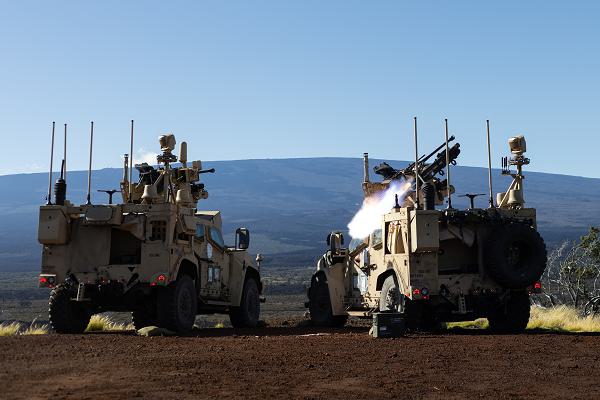
Pohakuloa Training Area, Hawaii. (February 4, 2025): If combat in Ukraine has taught U.S. military planners one lesson, it is that drone warfare will dominate air defense strategy for the near future. In this photo by Sergeant Jacqueline Parsons, a Marine Air Defense Integrated System (MADIS) fires upon a small, unmanned aircraft during a training exercise. MADIS is a mobile air defense system that helps the Marine Corps detect, track, and defeat aerial threats. It is part of the Marine Corps' plan to modernize its ground-based air defenses to deal with the emerging drone threat.
The goal is to expand the range of airspaces a Marine regiment can defend against not just unmanned drones but helicopters and aircraft as well. The newest version, the M-K2, features a 30 mm cannon, a machine gun, and Stinger air to air missiles giving it a full range of options to defeat incoming aircraft. The system uses Active Electronically Scanned Array (AESA) radars that can track multiple targets simultaneously and optical and infrared sensors to identify targets in low light conditions.
Loaded onto conventional Joint Light Tactical Vehicles, the MADIS is a self-contained package that is easily portable anywhere on the battlefield. The Marine Corps has three Littoral Anti-Air Battalions dedicated to deploying the MADIS and will purchase over two hundred MADIS systems by 2035. The Marines say they will focus on further integrating MADIS into combat units to create a layered defense against this ever-evolving aerial threat.


